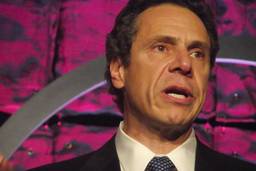Celebrating the End of Kids’ Wall Street Dreams
The number of young people in finance-related fields is falling—and that’s not a bad thing.
David Sirota

Amid fears of high youth unemployment creating a “lost generation,” there is suddenly a bright spot: apparently, fewer young people are going to work in the industry that destroyed our economy.
That’s the word from The New York Times, which reports that since 2008, “the number of investment bank and brokerage firm employees between the ages 20 and 34 fell by 25 percent,” as banks have laid off young people and slowed college recruiting.
For young Wall Streeters, this is a bummer. But for society as a whole, it’s cause for celebration because it may finally allow America to counter the destructive Gordon Gekko-ization of youth culture.
Recall that in recent years, up to a third of kids at elite universities have entered finance-related jobs. Such a mass shift in career preferences is, to put it mildly, alarming. A country whose best and brightest begin avoiding occupations that add value to society (doctors, engineers, etc.) in favor of vapid get-rich-quick gigs is a country that has stopped investing in itself and started mortgaging its future.
In light of that, Wall Street’s youth layoffs raise a bigger question: Why have so many more kids been pursuing careers in finance?
Part of it is greed, as a 2010 Higher Education Research Institute report found a record-high three-quarters of freshmen said being “very well-off financially” was their top objective. Not surprisingly, many graduate with speculation and usury in their plans.
Such a mindset, though, hasn’t emerged in a vacuum — it tracks two larger greed-driven trends.
The first is a change in the American Dream from a middle-class aspiration to an “MTV Cribs”-style fantasy. In that shift, we began portraying Wall Street fat cats as idols - the Great Men to be worshiped in our media and consulted by presidents. Taking cues from the larger culture, kids have naturally tried to follow in the idols’ footsteps.
Simultaneously, the American economy changed from producing tangible assets to now more often generating paper profits for bankers. The numbers, as recounted from economist Simon Johnson, tell that tale: “From 1973 to 1985, the financial sector never earned more than 16 percent of domestic corporate profits…last decade, it reached 41 percent.”
This metamorphosis was no force of nature - it was the result of bank-owned politicians deregulating and subsidizing the finance industry, turning it into a monster swallowing an outsized share of national wealth. That, in turn, prompted an employment shift, which included young people.
“When banks get 25 percent to 30 percent on credit cards, and 500 or more percent on payday loans, capital flees from honest pursuits, like auto manufacturing,” author Thomas Geoghegan wrote in Harper’s Magazine. “We set up the incentives to keep our best and brightest out of Detroit…(They) went off to work at AIG.”
Those incentives highlight the final part of the youth story: need.
Today, the average undergraduate matriculates with $25,000 in student debt. That burden compels kids to base career moves on where they can get the richest the quickest so as to pay off their loans. In an economy that has privileged finance, that often means heading to Wall Street.
Now, though, that career path may be closed - and even if it’s only temporarily closed, the reprieve is significant.
A few semesters worth of kids driven into occupations that build and sustain rather than cannibalize and leech could begin moving a nation back to economic fundamentals. It could mean kids finally appreciating that greed isn’t so good, and that policy debates - whether they’re about regulation or student loans - aren’t meaningless.
Ultimately, young people might see that those debates actually matter - and that they better get involved in them or their future will remain in jeopardy.
David Sirota is an award-winning investigative journalist and an In These Times senior editor. He served as speechwriter for Bernie Sanders’ 2020 campaign. Follow him on Twitter @davidsirota.








